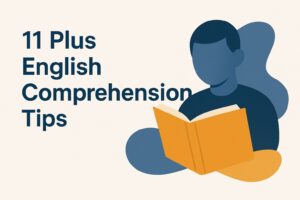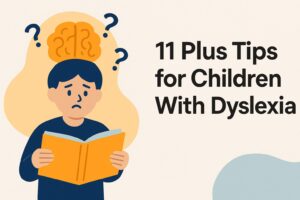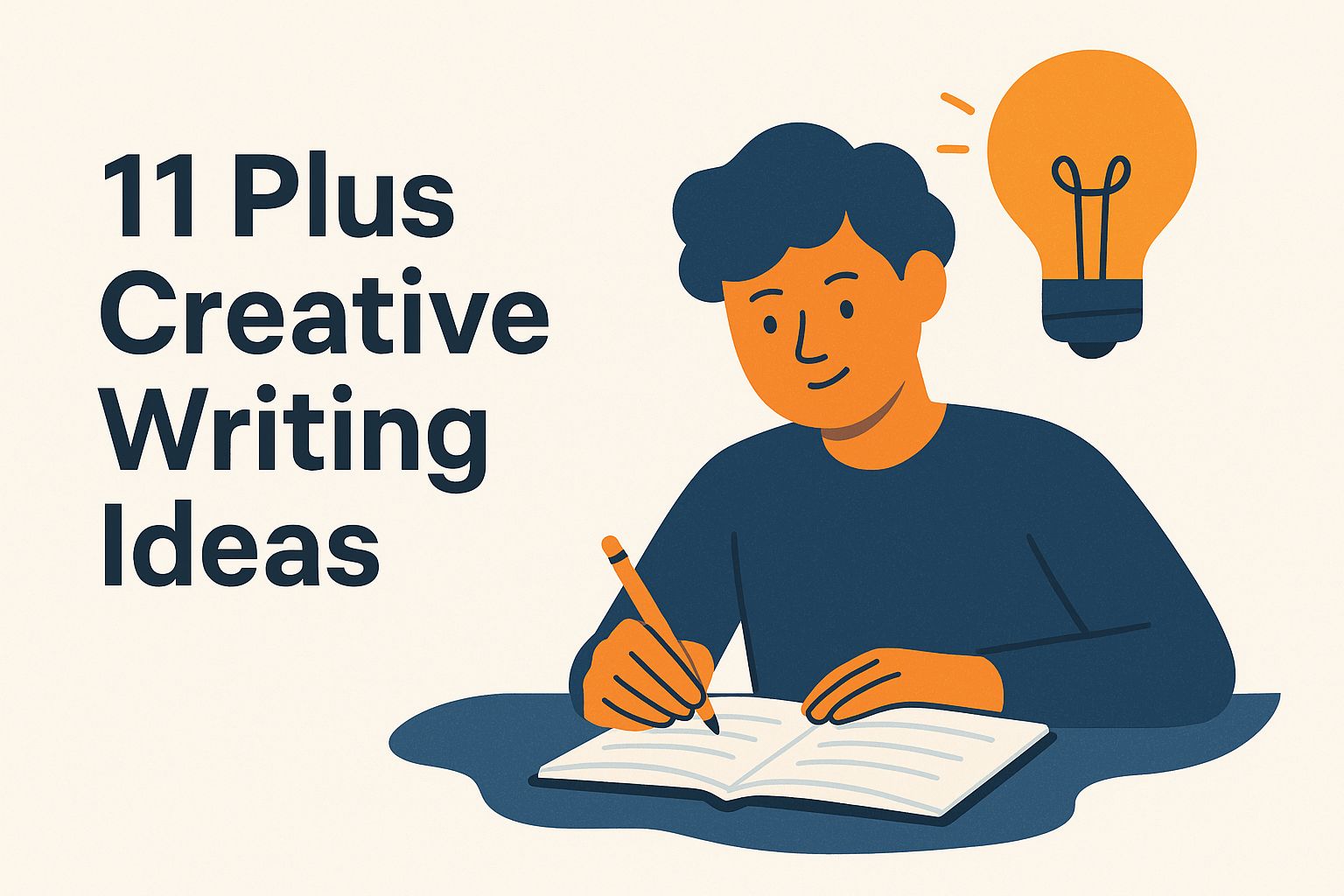
11 Plus Creative Writing Ideas
Ready to unleash your imagination? Creative writing isn’t just a skill; it’s a way to explore your thoughts and express your unique voice, especially when preparing for the 11 Plus exam. In this article, we’ll dive into a range of 11 Plus creative writing ideas—from descriptive to narrative and even poetry—that will spark your creativity.
Plus, we’ll share inspiration sources and techniques to elevate your writing game. Let’s get those creative juices flowing!
Importance of Creative Writing
Creative writing plays a vital role in developing essential communication skills, allowing students to convey their thoughts and emotions effectively. Engaging in creative writing not only improves their ability to articulate ideas but also nurtures critical thinking and emotional intelligence.
Research indicates that students who participate in creative writing exercises often exhibit enhanced problem-solving abilities and increased empathy. For those interested in extending learning beyond the classroom, exploring summer holiday learning activities can further boost these skills.
For instance, a 2019 study revealed that students engaged in narrative writing achieved significantly higher scores in emotional understanding compared to their peers. Incorporating reflective journaling into the curriculum provides students with the opportunity to delve deeper into their feelings, further enhancing their academic performance and social awareness.
By consistently offering creative writing opportunities in the classroom, educators can foster these transformative outcomes.
Overview of the 11 Plus Exam
The 11 Plus exam assesses a range of skills, including verbal reasoning, mathematics, and, importantly, writing ability. The writing component usually consists of a creative writing task and, in some cases, a comprehension section. Scoring for this portion is based on clarity, creativity, and coherence.
In the creative writing segment, students may be prompted to respond to a specific topic or write a short story, providing them with an opportunity to demonstrate their imaginative abilities. It is crucial for them to concentrate on structure, use a varied vocabulary, and adhere to proper grammar.
Practising with past papers can be quite beneficial; resources such as the Bond 11 Plus practice papers can help students become familiar with the exam format and timing. The goal should be to craft concise and engaging narratives, which can significantly enhance their scores.
Types of Creative Writing Prompts
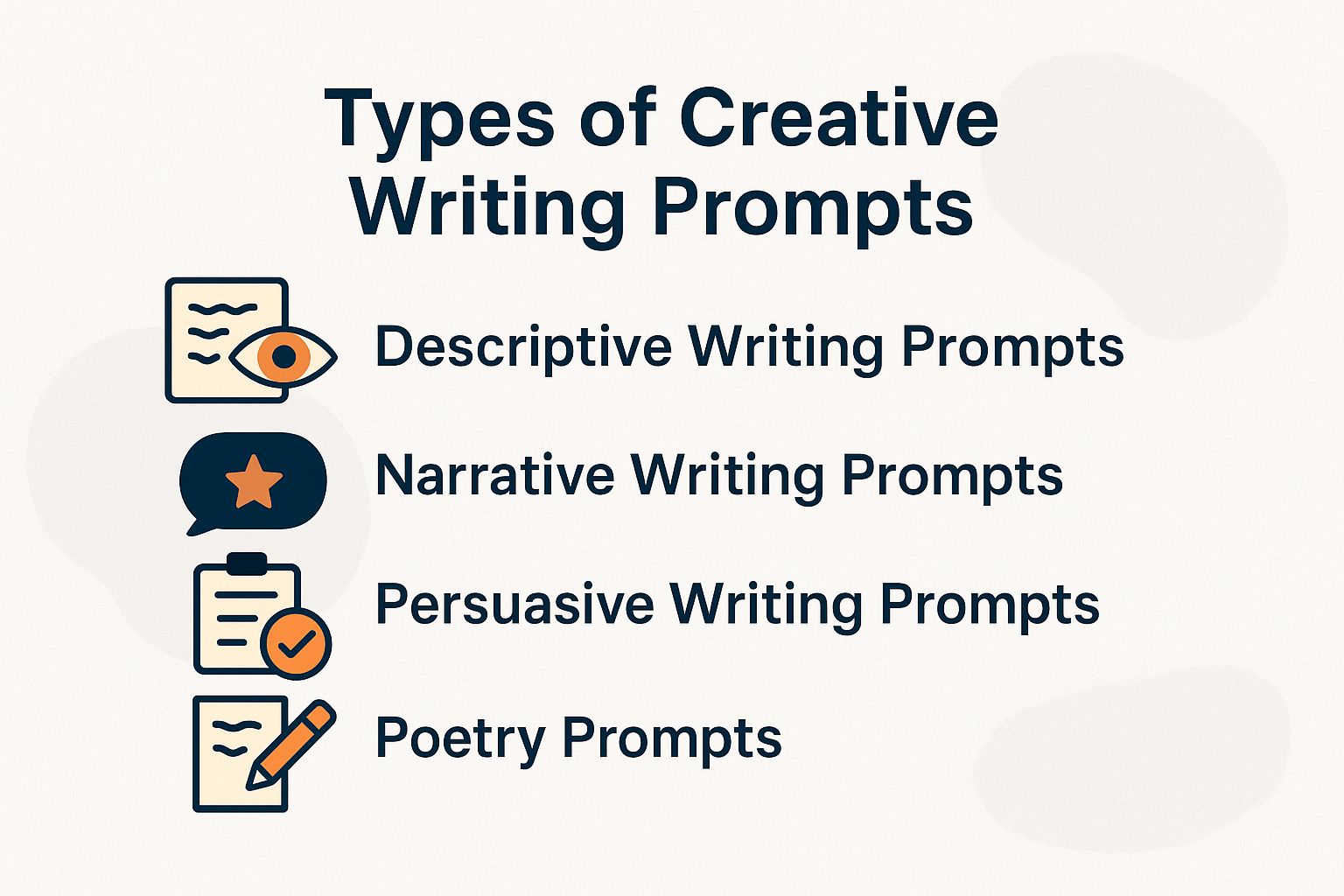
Utilising a diverse array of writing prompts can significantly enhance creativity and engagement among young writers who are preparing for the 11 Plus exam. By exposing them to various topics and styles, they can cultivate their writing skills and express their thoughts more effectively. For comprehensive preparation strategies, including ways to boost comprehension skills, you might find it helpful to learn more about 11+ comprehension tips.
Descriptive Writing Prompts
Descriptive writing prompts encourage students to utilise sensory details to create vivid imagery with their words. To enhance the quality of their descriptions, consider the following specific prompts:
- Describe your ideal day at the beach, focusing on the soothing sound of the waves and the gentle warmth of the sun.
- Paint a picture of a bustling city market, capturing the vibrant colours, enticing aromas, and lively conversations that fill the air.
- Narrate a peaceful walk through the forest, detailing the satisfying crunch of leaves underfoot and the melodious chirping of birds overhead.
- Illustrate a rainy day at home, emphasising the earthy scent of wet soil and the cosy warmth that envelops you indoors.
- Convey the excitement of a carnival, highlighting the dazzling lights and cheerful music that create an atmosphere of joy.
Encouraging students to immerse their readers in these moments by incorporating sensory details can evoke strong emotions and create a more engaging experience.
Narrative Writing Prompts
Narrative writing prompts provide students with an excellent opportunity to create stories that showcase their imagination and enhance character development. Here are five engaging prompts designed to inspire your students:
- “Write about a day when everything went wrong”—this prompt encourages students to delve into their characters’ reactions during a crisis.
- “Describe a secret that changes a character’s life”—this allows for in-depth exploration of the character and the moral dilemmas they may face.
- “Imagine a world where people can read minds”—students can create unique characters and examine the consequences of possessing such abilities.
- “Write about a chance encounter that leads to unexpected friendship”—this prompt focuses on character interaction and growth.
- “Create a story set in a forgotten town”—this can inspire rich descriptions and intriguing backstories.
It is important to guide students to structure their narratives with a clear beginning, middle, and end to ensure effective and compelling storytelling.
Persuasive Writing Prompts
Persuasive writing prompts provide an excellent opportunity for students to develop their ability to formulate arguments and effectively persuade their audience. Here are five compelling prompts to consider:
- “Should school uniforms be compulsory?”
- “Is technology bringing people closer together or isolating them?”
- “Should the voting age be lowered to 16?”
- “Is animal testing necessary for scientific advancement?”
- “Should we ban single-use plastics to combat pollution?”
Each of these prompts invites students to examine both sides of an issue critically.
To structure their arguments effectively, they can utilise techniques such as the Toulmin method, which focuses on logical appeal, as well as rhetorical devices like anecdotes to bolster their positions.
It is important to encourage students to support their claims with evidence and real-world examples, ensuring their arguments are both persuasive and grounded in reality.
Poetry Prompts
Poetry prompts serve to inspire students in their exploration of emotions and creativity, both through structured forms and free verse. Here are five distinct poetry prompts designed to ignite creativity:
- Write a haiku that reflects the changing seasons, utilising vivid imagery to convey the sights and sounds of nature.
- Craft a sonnet that delves into the theme of love, incorporating metaphors such as “a flame that warms and burns.”
- Create a free verse poem centred around a childhood memory, emphasising sensory details that evoke a sense of nostalgia.
- Compose a limerick that humorously captures a moment of embarrassment.
- Experiment with an acrostic poem using the word ‘freedom,’ where each line expresses your personal interpretation of this concept.
These prompts encourage the exploration of diverse forms and techniques in poetry.
Inspiration Sources for Creative Writing
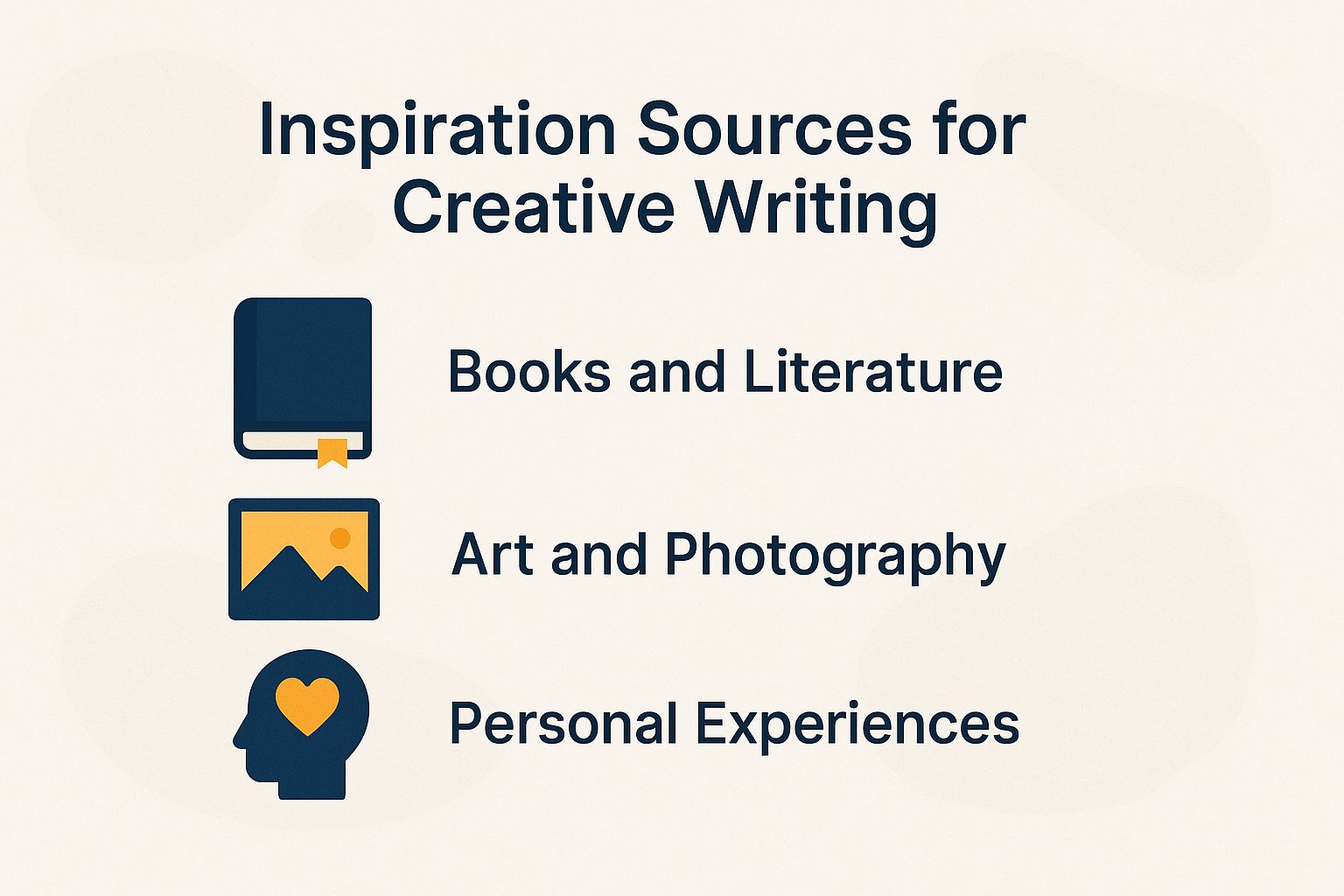
Inspiration for creative writing can be found in a variety of sources, such as literature, art, and personal experiences.
Each of these elements can spark new ideas and ignite the imagination, leading to rich and engaging writing.
Books and Literature
Classic and contemporary literature can be a profound source of inspiration for emerging writers. There are five influential books that are particularly worth exploring:
- Pride and Prejudice by Jane Austen, which showcases the intricacies of social class and romance.
- 1984 by George Orwell, offering a deep dive into a dystopian society and its psychological effects.
- The Great Gatsby by F. Scott Fitzgerald, which explores the concept of the American Dream.
- To Kill a Mockingbird by Harper Lee, focusing on themes of moral development and social justice.
- The Catcher in the Rye by J.D. Salinger, which captures the essence of teenage angst and alienation.
By analysing the themes and writing styles presented in these works, writers can refine their own voice and narrative techniques.
Art and Photography
Art and photography provide visual stimuli that can truly ignite creativity and foster descriptive writing. For example, students might delve into Vincent van Gogh’s ‘Starry Night,’ paying close attention to the swirling skies and vibrant colours. Alternatively, they could analyse Ansel Adams’ ‘Moonrise, Hernandez,’ drawing on its stark contrasts to evoke emotion and atmosphere.
It is beneficial to encourage students to describe the mood, the use of light, and the emotions these pieces inspire. Resources such as Google Arts & Culture can offer high-resolution images for a more detailed examination.
By comparing various artworks or photographs, students can refine their observational skills, learning to articulate intricate details in their narratives.
Personal Experiences
Personal experiences serve as a rich resource for creative writing, enabling students to reflect on their own lives. To transform these memories into compelling narratives, students can follow some practical steps.
- First, it is beneficial to engage in daily journalling, capturing moments that evoke strong emotions or vivid imagery.
- Next, students should select a pivotal memory and focus on the sensory details—what they saw, heard, or felt during that experience.
- Using descriptive language is crucial, as it helps to create a vivid picture for readers.
- Additionally, employing the writing technique of “show, don’t tell” can effectively engage emotions.
This approach not only makes stories more relatable but also strengthens personal connections, transforming everyday experiences into captivating narratives.
Techniques to Enhance Creative Writing
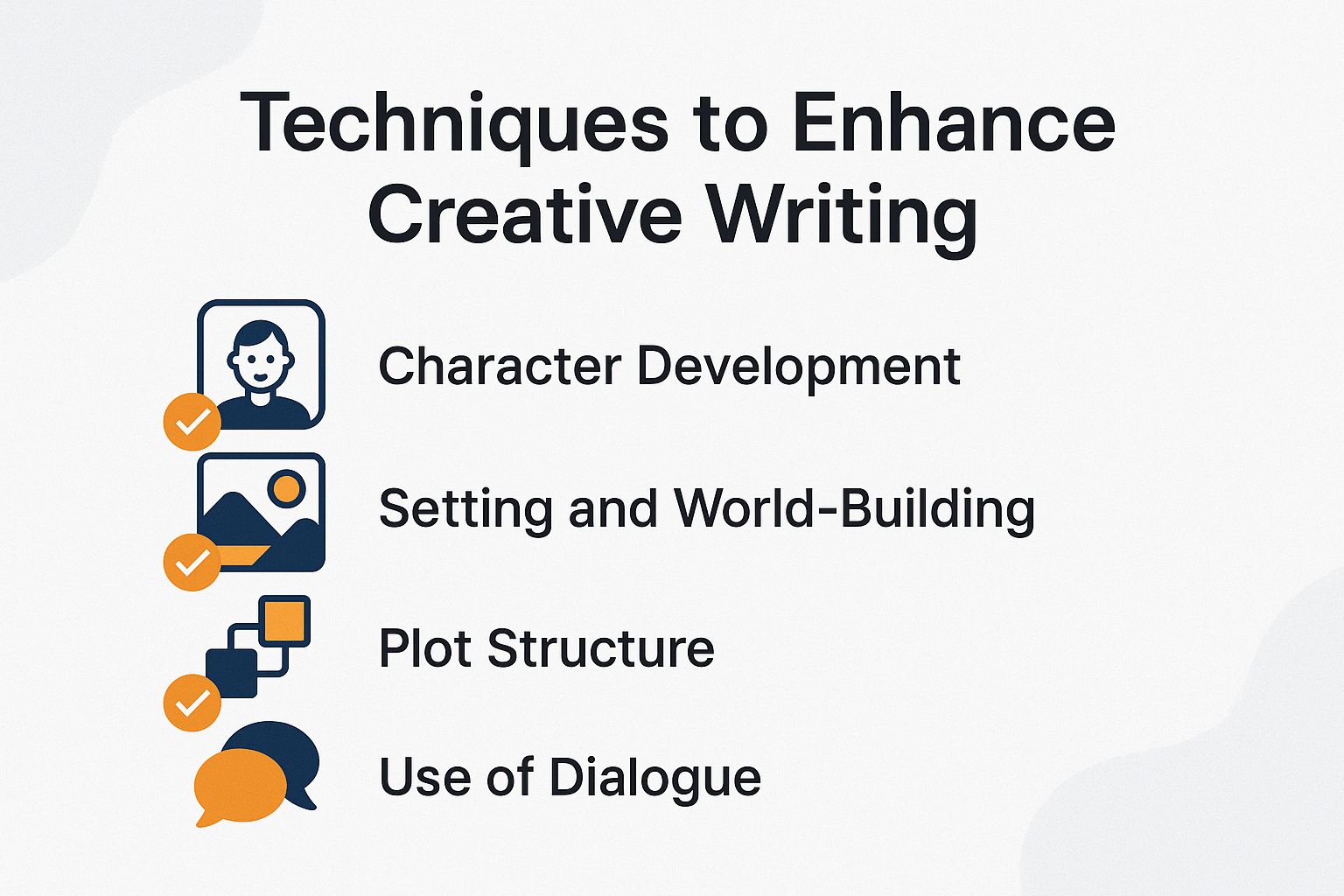
Implementing effective writing techniques can greatly enhance a student’s creative writing abilities and improve their overall storytelling skills. In fact, understanding the nuances of language and comprehension can be essential. Our guidance on comprehension tips can provide valuable insights into developing a more engaging and cohesive narrative style, ultimately elevating their writing to new heights.
Character Development
Strong character development is essential for making stories relatable and engaging for readers. To enhance this aspect, one can begin by creating character sketches that detail backgrounds, personality traits, and motivations.
For example, Howard Roark from Ayn Rand’s “The Fountainhead” embodies the principles of individualism and architectural integrity, clearly illustrating his internal conflicts and ambitions. It is also important to understand character arcs by mapping their growth throughout the narrative. A notable example is Elizabeth Bennet in “Pride and Prejudice,” who transforms from a state of prejudice to one of understanding.
By employing these strategies, writers can introduce depth and realism to their characters, effectively capturing the audience’s attention.
Setting and World-Building
Effective setting and world-building play a crucial role in immersing readers in the narrative, thereby enriching their overall reading experience. To create vivid settings, it is essential to focus on sensory details that evoke emotions and visual imagery.
For instance, when describing a bustling medieval marketplace, one might mention the enticing scent of freshly baked bread mingling with aromatic spices, the vibrant colours of the merchants’ stalls, and the lively sounds of barter and laughter.
Incorporating geographic context can further enhance the scene; for example, referencing towering mountains in the distance or a winding river nearby adds depth. Utilising tools like visual mapping software, such as MindMeister, can assist in visualising the layout of your world, while character journals serve as effective resources for tracking specific cultural nuances.
This layered approach not only enhances believability but also fosters a deeper connection between the reader and the narrative.
Plot Structure
Understanding plot structure is essential for crafting engaging narratives that captivate readers. A strong plot structure typically consists of four key components.
- The exposition introduces the setting and characters, much like the opening of “The Great Gatsby,” where Fitzgerald effectively sets the tone of the Roaring Twenties.
- The rising action builds tension, as seen in the escalating conflict between Harry Potter and Voldemort throughout J.K. Rowling’s series.
- The climax serves as the turning point, exemplified by Katniss Everdeen’s critical decision during the Games in “The Hunger Games.”
- Finally, the resolution ties up loose ends, providing a sense of closure, as demonstrated when Darcy and Elizabeth resolve their misunderstandings in “Pride and Prejudice.”
Utilising this framework can significantly enhance the effectiveness of storytelling.
Use of Dialogue
Dialogue in creative writing plays a crucial role in developing characters, advancing the plot, and revealing underlying conflicts. To enhance your dialogue, it is important to focus on subtext—where characters articulate one thing while implying another, thereby creating tension.
For instance, in Hemingway’s “The Sun Also Rises,” the minimalistic exchanges are laden with deep emotions, demonstrating the power of simple dialogue. It is also beneficial to vary speech patterns to reflect a character’s background; a nervous character might use shorter sentences, while an intellectual character could favour longer, more complex constructs.
Reading dialogue aloud can be an effective method for identifying unnatural phrasing. Additionally, examining scripts, such as those written by Aaron Sorkin, reveals how rhythmic dialogue can bring conversations to life, keeping readers engaged and invested in the narrative.
Creative Writing Exercises
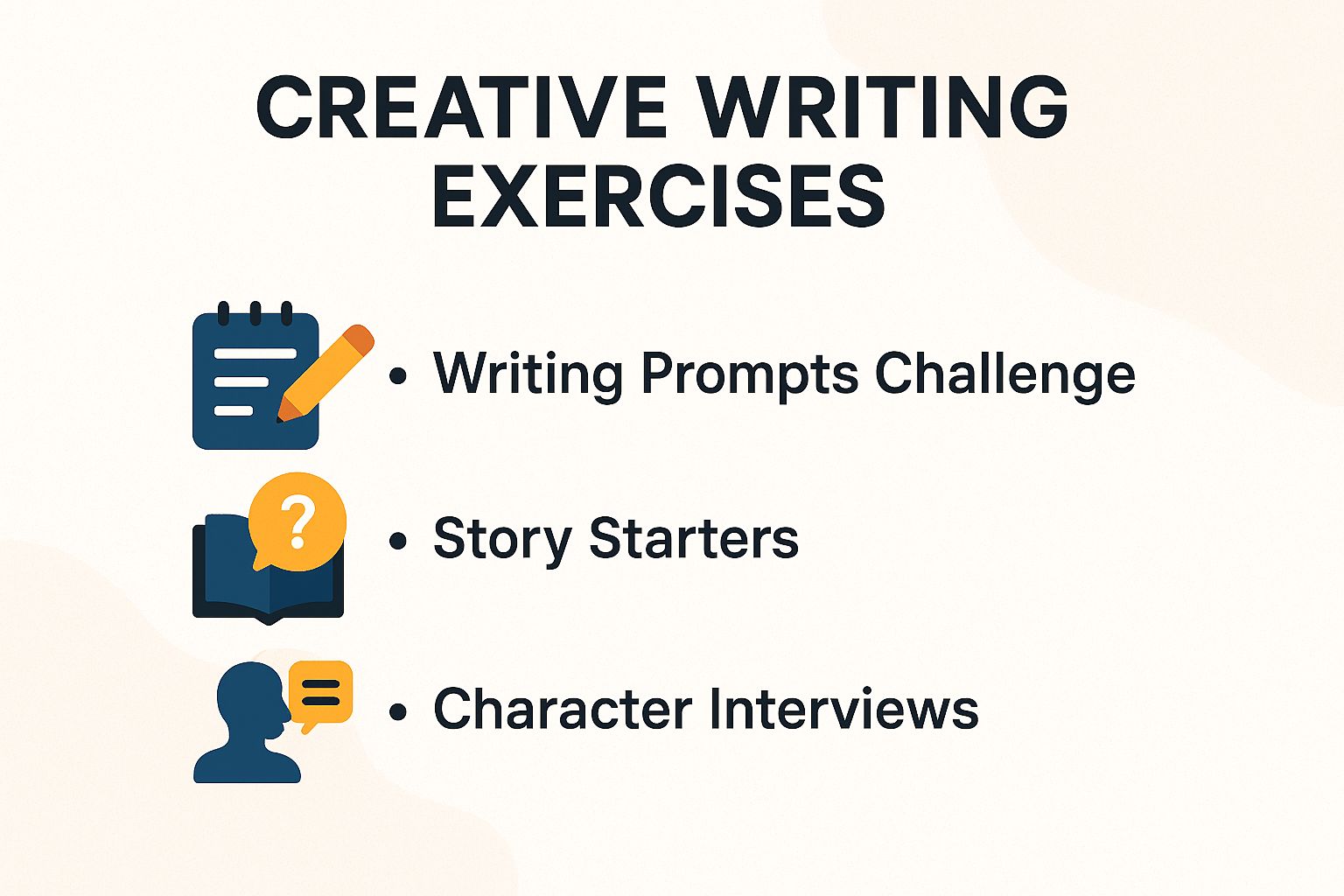
Participating in creative writing exercises can greatly enhance a student’s skills, all whilst making the writing process both enjoyable and productive.
Writing Prompts Challenge
A writing prompts challenge is an excellent way to encourage students to write daily, pushing their boundaries and expanding their creativity. To kick off the 30-day challenge, it is important to provide prompts that inspire and ignite their imagination.
For example, on Day 1, you might suggest, “Describe your favourite place in vivid detail,” while Day 15 could prompt them to “Write a letter to your future self.” Encouraging students to share their responses in a group forum can facilitate constructive feedback, fostering a sense of community and motivation among participants.
Utilising a shared document, such as Google Docs, can streamline the process and make it easy for students to comment on one another’s work. This not only enhances their individual learning experiences but also promotes collaboration and engagement within the group.
Story Starters
Story starters serve as excellent launching points for students, helping them to ignite their creativity and navigate the often daunting writer’s block. Below are ten engaging story starters designed to spark imagination:
- A letter arrives from the past.
- A mysterious stranger appears in town, claiming to know your darkest secret.
- You wake up with the ability to understand animals.
- A hidden door in your attic leads to another world.
- You find a photograph that changes everything about your family’s history.
- An unusual fog rolls in, hiding something sinister.
- You accidentally summon a mythical creature.
- A game on your phone begins to blend with reality.
- You discover a long-lost journal from a famous explorer.
- A seemingly mundane object grants you superpowers.
To transform these ideas into full narratives, it is helpful to consider the ‘who, what, where, and why’ of each scenario. Expanding on character motivations, setting details, and conflicts will allow for the development of engaging plots.
Character Interviews
Conducting character interviews can significantly enhance a writer’s understanding of their characters and their motivations. To conduct effective character interviews, it is beneficial to ask questions that uncover core traits and motivations.
For example, one might inquire about a character’s greatest fear, a cherished memory, or their biggest regret. This method serves to illuminate the depth of the character.
Students can utilise the insights gathered from these interviews to craft more compelling narratives, ensuring that characters are not merely plot devices but rather multidimensional beings. By integrating these revelations into the plot, writers can enhance character arcs and tensions, resulting in a more engaging reading experience.
Editing and Revising Creative Work
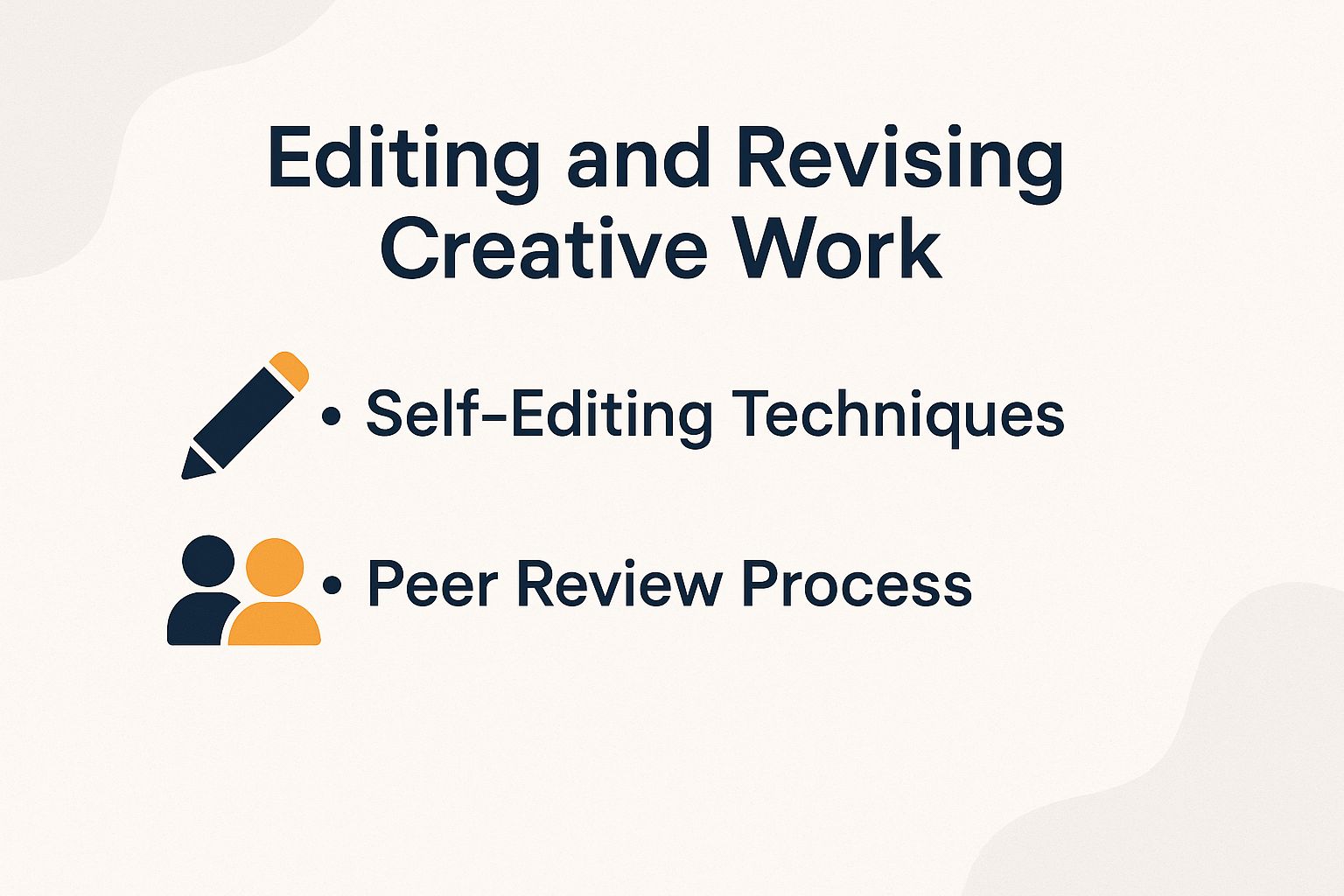
Editing and revising are essential stages in the writing process that can elevate a good piece of writing into a truly outstanding one.
It is during these steps that writers can refine their ideas, improve clarity, and enhance overall quality.
Self-Editing Techniques
Self-editing techniques allow writers to enhance their work before seeking external feedback. To improve your self-editing process, consider these actionable strategies:
- Read your draft aloud to identify any awkward phrasing.
- Use an editing checklist to ensure you have addressed common issues such as typos and sentence structure.
- Focus on one element at a time during each review—begin with grammar, then concentrate on content clarity, and finally examine style and tone.
Additionally, tools like Grammarly can assist with grammar checks, while Hemingway Editor is helpful for streamlining your prose. By implementing these methods, you can significantly elevate the quality of your writing before sharing it with others.
Peer Review Process
The peer review process is a crucial component of the writing journey, offering a wealth of diverse perspectives and constructive feedback. To conduct effective peer reviews, it is essential to create a supportive environment where every participant feels at ease sharing their thoughts.
Start by establishing clear guidelines for providing feedback. It is important to be specific; for example, highlight which sections particularly resonate or identify areas that may lack clarity. When receiving feedback, it is vital to maintain an open mindset. Do not hesitate to ask clarifying questions to ensure a full understanding of the suggestions. For instance, if a peer points out a confusing paragraph, it would be beneficial to ask which parts were unclear and why.
This collaborative approach not only enhances the quality of your work but also encourages mutual growth among peers.
Frequently Asked Questions
What are 11 Plus Creative Writing Ideas?
11 Plus Creative Writing Ideas are prompts and topics designed to inspire and guide children in their creative writing process. These can include a wide range of themes and styles, such as fictional stories, personal narratives, and descriptive pieces.
Why are 11 Plus Creative Writing Ideas important for children?
11 Plus Creative Writing Ideas are essential for children as they not only help develop their creative thinking and writing skills, but also give them the opportunity to express themselves and their ideas in a fun and engaging way.
Where can I find 11 Plus Creative Writing Ideas?
There are various resources available online, such as websites, blogs, and books, that offer a diverse range of 11 Plus Creative Writing Ideas. Additionally, schools and local libraries may also provide access to writing workshops and classes.
How can I use 11 Plus Creative Writing Ideas effectively?
To use 11 Plus Creative Writing Ideas effectively, it is important to choose topics and prompts that interest and inspire the child. It is also essential to provide a supportive and encouraging environment for the child to freely express their ideas and creativity.
Are there any tips for parents to help their children with 11 Plus Creative Writing Ideas?
Some tips for parents to help their children with 11 Plus Creative Writing Ideas include encouraging them to read and write regularly, providing a variety of writing materials, and offering feedback and praise on their work. It is also important to create a positive and stress-free atmosphere for the child.
How can 11 Plus Creative Writing Ideas help with exam preparation?
11 Plus Creative Writing Ideas can be beneficial for exam preparation as they allow children to practise and improve their writing skills, which are often tested in entrance exams. By regularly engaging in creative writing, children can become more confident and competent writers, which can contribute to their success in exams.


